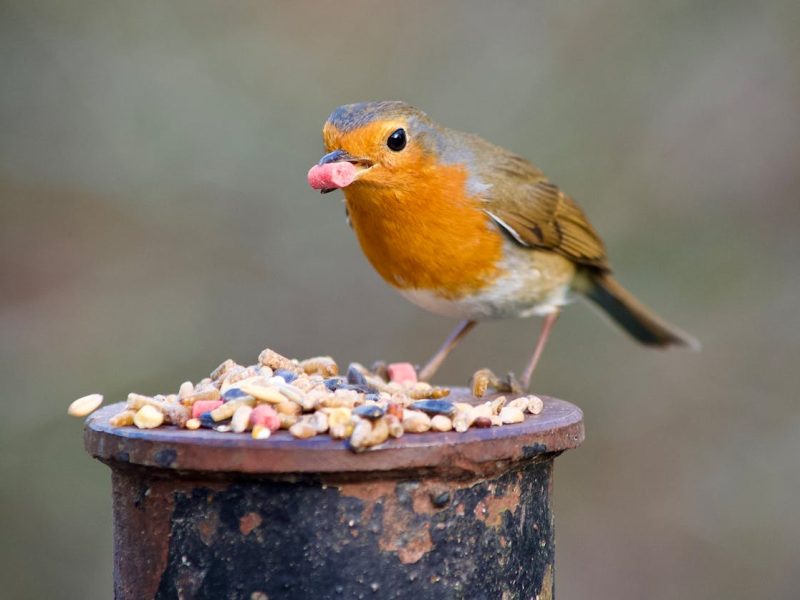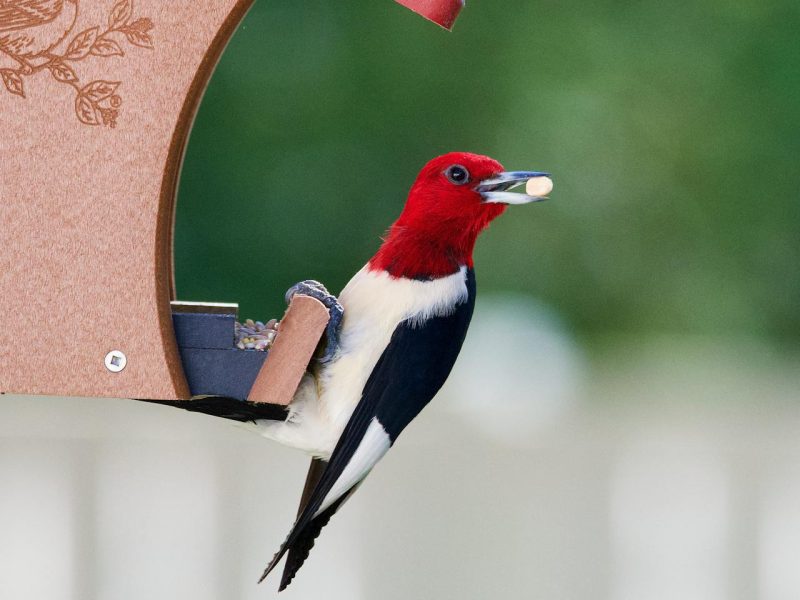Watching birds flock to your backyard feeders is a simple joy. Their chirps fill the air with life. Their bright colors and energetic movements captivate the eye. But to keep those feathered friends coming back, you need to give them the right snacks.
From my own experiences, I’ve found certain bird foods are irresistible to our winged buddies. It’s been trial-and-error learning what works best. Let me share what I’ve discovered about the most attractive birdseed mixes and foods.
The Classics Never Disappoint
You can’t go wrong with the basics. Plain-old bird seed still ranks as one of the top bird foods. It typically contains a mix of millet, sunflower seeds, cracked corn, and sometimes Nyjer seed (for finches).
This no-frills blend appeals to all the regular visitor species. Sparrows, juncos, cardinals, grosbeaks, and more eagerly devour these simple seeds. It’s an affordable way to bring in a wide variety of feathered customers.
From personal experience, I can say this staple seed mix gets depleted faster than any other at my feeders. Those little avian vacuums can’t get enough! Replenishing it every few days keeps the buffet stocked.
The Power of Sunflower Seeds
While basic bird seed mixes contain some sunflower seeds, many birds go wild for concentrated help. Both black oil and striped sunflower seeds have crazy pulling power in my yard.
Bigger species like blue jays, cardinals, and grackles can’t resist sunflower’s hefty nutrition and flavor. But even smaller birds like chickadees, titmice, and nuthatches eagerly snatch them up.
I’ve watched chickadees skillfully extract every last morsel from a sunflower seed’s interior. Somehow they make an aerobatic performance out of opening each shell!
The only downside with sunflower seeds is the mess. All those discarded shells quickly accumulate under feeders. But hey, I don’t mind doing a little yard cleaning to keep my feathered pals properly fueled.
Suet is a Calorie-Rich Treat
When winter chills arrive, fat and calories become a hot commodity for birds. That’s why suet is so valuable during cold months. This rendered beef or vegetable fat provides an energy-dense food source for warmth.
From my observation, woodpeckers, nuthatches, and chickadees are the biggest suet fans. They tenaciously cling to the suet cage, chiseling off beak-sized portions with gusto. Sometimes their zealous feeding frenzies get comically messy!
Suet doesn’t have to be plain, either. Many varieties contain ingredients like seeds, fruits, nuts, and insects for extra nutrition. A high-calorie suet nugget packed with goodies is like an avian power bar.
Don’t forget to provide fresh, unfrozen water as well. Birds need hydration to help digest their fatty suet snacks.
Nyjer Seed Lures the Finches
While larger birds swarm sunflower seeds, smaller finches like goldfinches go gaga over nyjer seed (often sold as “thistle” seed). Their slender beaks are perfect for extracting the tiny black seeds.
Nyjer’s distinct flavor seems to drive finches into feeding frenzies at my specialized feeders. They gather in lively, chirping flocks, jockeying for prime perches to dine on their favorite course.
It’s fun to watch the vibrant yellow birds accented against the contrast of dark nyjer seed. Their metabolisms must run a million miles per hour with all that energy expenditure!
One small gripe – nyjer seed’s small size means it can get messy under the feeder. But as with sunflower seeds, a little outdoor sweeping is a small price for the up-close bird-watching opportunities.
Get Nutty with Peanuts
Talk about an irresistible bird treat! Peanuts rank among the most sought-after snacks I serve in my backyard. Big and small species alike go bonkers for this high-protein, high-fat legume.
Blue jays and woodpeckers are particularly aggressive peanut snatchers. They’ll fight over whole nuts tucked into feeders. Watching their entertaining tactics – jabbing, tossing, readjusting – provides tons of amusement.
Even tiny chickadees join the peanut party by hauling away shelled pieces. They stuff their little cheeks to cartoonish proportions! Seems all that effort must provide premium fuel.
My one caution is to avoid salted peanuts or excessive moldy nuts. Like us, too much salt and toxins aren’t great for birds’ health. Shelled, unsalted peanuts are the safe way to share this favorite.
Good ol’ Bird Bread
As much as our feathered friends adore seeds and nuts, many can’t resist a good ol’ slice of bread either. Plain breadcrumbs or crumbled pieces make a simple, convenient bird food.
I’ve watched birds as different as robins, grackles, sparrows, and starlings scurry for thrown breadcrumbs. They seem to relish this “junk food” with the same zeal as my kids devouring chicken nuggets!
Fresh bread or used for making croutons both work fine. Just avoid moldy or stale pieces that could make birds sick.
Like peanuts, I’d caution against overly salted, seasoned, or buttered bread. Stick to basic, unsalted varieties for the healthiest bird diet.
Don’t Forget Fruit and Sweets
While higher-sugar foods aren’t ideal for birds’ nutrition, fruits and sweets can work as an occasional treat. I’ve tempted birds with everything from melon slices and grapes to sugar water and jelly.
The sweetness acts like feathered fast food, driving birds into a frenzy despite not being the healthiest choice. Robins, waxwings, mockingbirds, and orioles are particularly enthusiastic sugar fans when I put out fruit offerings.
I like limiting sugary treats to special occasions or harsh winter days. A little “dessert” seems fitting in moderation or a tough season’s survival aid. But overall, more nutritious staple foods should form a bird diet’s foundation.
Mixing It Up Keeps Birds Coming
So what’s the single “best” bird food to attract the most species? From my years tending backyard feeders, I’ve found it’s smart to take a diverse approach. Providing a variety caters to different birds’ preferences.
Some days, sunflower seeds reign as the hands-down favorite. The next, plain old mixes might spark a feeding frenzy. Then fruit or suet could drive birds wild in another scenario. Mixing things up mimics nature’s ever-changing menu.
Using diverse feeder types also boosts your backyard’s avian appeal. Hopper feeders dispense seed blends. Socks and logs offer oozy suet servings. Mesh tubes deliver nyjer for finches. Every bird can find its perfect comfort food station.
So offer a balanced buffet of goodies, and the birds will beat a path to your yard’s five-star restaurant! Their happy chirps and flutters make any small effort worth it.



